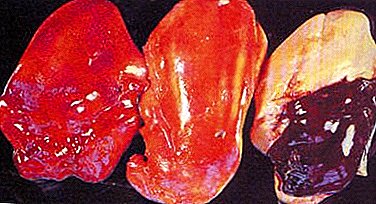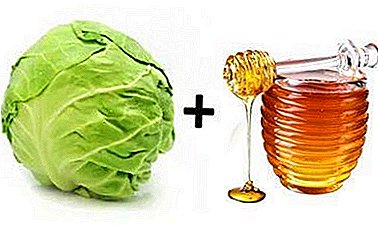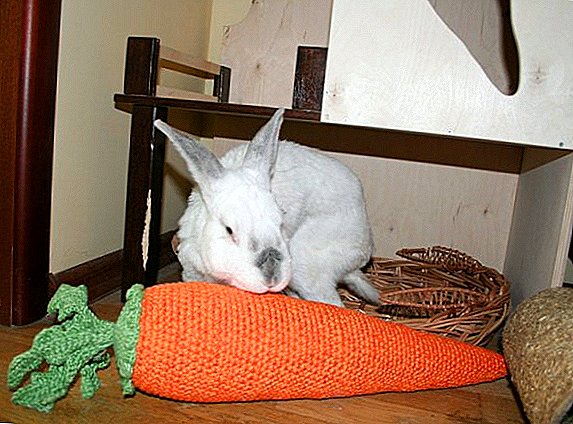
In conditions of constant improper feeding and keeping in poultry, the liver is the first to suffer.
It is through this body that almost all elements that enter the chicken body pass.
Very often, improper maintenance of the bird causes liver obesity, which in the future may cause the death of the bird.
In this article we will talk about obesity in chickens or liver lipidosis. You will learn what the disease is and how to treat it.
What is liver obesity in chickens?
Liver obesity (or hepatic lipidosis) can be congenital or acquired a violation of the metabolism of fats in the body of the bird.
This is a rather dangerous disease that almost immediately affects chicken egg production. That is why it is necessary to check chickens of egg breeds for lipidosis in order to help them in time in case of a decision of this diagnosis.
The fact is that, first of all, the number of eggs in a bird decreases, which it can carry. And this, in turn, is reflected in the overall profitability of the economy. Subsequently, the bird can die very quickly. After the death of her meat can no longer be used on the farm.
Causes of disease
 Obesity in chickens can manifest itself for several reasons. One of the most common is high fat diet.
Obesity in chickens can manifest itself for several reasons. One of the most common is high fat diet.
The body of the chicken physically can not process a high concentration of fat in the feed, so he begins to gradually postpone it in the body, which directly affects the health of the bird.
Also, the liver can become covered with additional fatty layer due to very frequent feeding. Many farmers mistakenly believe that the more feed they give to the bird, the faster it will grow and gain mass.
This is not entirely true, because birds cannot digest too much grain. Gradually, it is delayed, putting pressure not only on the liver, but also on other internal organs.
Any thyroid disease can also cause liver obesity. In the body of poultry fat metabolism is disturbed, which is controlled by this gland, so the fat begins to be deposited abundantly in the body.
Diabetes has the same effect. This disease can be transmitted by heredity, so the chicken genome must be carefully monitored. In particular, this concerns farms where selection of poultry is carried out.
In addition, you need to be careful in the use of chemicals on the farm.
Chickens react negatively to arsenic, chloroform, aflatoxins and phosphorus, which are often used in agriculture. The accumulation of toxins leads to the fact that the bird's liver stops functioning normally.
Course and symptoms
 The first sign of liver obesity is massive reduction in egg production in laying hens. By approximate calculations, it falls by 35%.
The first sign of liver obesity is massive reduction in egg production in laying hens. By approximate calculations, it falls by 35%.
At the same time the mortality of the bird increases by 5%. However, laying hens look good, they actively walk around the yard during their walking.
In healthy-looking hens, they often find overweight. It may be 30% higher than normal due to the fact that in the abdominal cavity begins the active deposition of fat.
Gradually, the comb of the hen and the earrings become pale and increase in size. After a period of time, the tip of the ridge turns blue.
During obesity, bird liver is increased by 60%. Such a large internal organ strongly stretches the surrounding muscles, forming an abdominal hernia. Feathers fall out on this part of the body and form a blood rind. At the same time, even through the skin, a yellow layer of fat is visible, which can reach 3 cm in thickness.
Diagnostics
 To diagnose liver obesity, veterinarians use poultry screening and weighing.
To diagnose liver obesity, veterinarians use poultry screening and weighing.
Any excess weight may be a suspicion of liver lipidosis. Also in the later stages, feathers begin to fall on the belly of the bird, revealing icteric skin.
Unfortunately, in the early stages of the disease it is difficult to understand whether the bird is suffering from obesity or not. That is why chickens take blood serum for analysis.
In laboratory conditions, the levels of urea, bilirubin and creatine are determined. In a perfectly healthy laying hen, these figures should be 2.3-3.7, 0.12-0.35, 0.17-1.71 µmol / l, respectively.
Treatment
 Diseased birds should be fed with special low-fat food that is rich in the content of beneficial vitamins and trace elements.
Diseased birds should be fed with special low-fat food that is rich in the content of beneficial vitamins and trace elements.
They will help sick birds cope with the disease. In addition to these therapeutic measures, you can give drugs that improve the functioning of the liver. These medications include lipotropic: lecithin, choline, inositor, betanin and methionine.
Lecithin is able to significantly reduce the appetite of chicken. She will consume less feed using her own fat reserves.
Gradually, they will begin to decrease and the chicken liver will work normally. Choline, inozitor, betanin and methionine help break down food, and also contribute to the destruction of excess fat.
Prevention
 The most effective prevention of liver obesity in chickens is considered proper feeding.
The most effective prevention of liver obesity in chickens is considered proper feeding.
In no case can not overfeed the bird and make it very hungry. Chickens should receive a uniform amount of nutrients in the feed in order for the digestive system to work properly.
However, for the purpose of prevention, laying hens can be given selenium at a dose of 1 mg / kg, combining it with methionine at a concentration of 0.5 g / kg of compound feed. This mixture will help avoid liver obesity.
Copper sulfate (60 mg), choline chloride (1.5 g), methionine (0.5 g), vitamin B (6 mg / kg feed) are used for poultry farms for the same purpose. This mixture should be given to the hens during the week.
All these compounds are hepatoprotectors - they contribute to the breakdown of excess fat entering the body of a bird.
Conclusion
Liver obesity is an unpleasant disease that most often laying hens suffer. It directly affects the number of eggs laid, so farmers need to carefully monitor their birds.
It is better to immediately select the correct and effective hepatoprotectors that promote the correct metabolism, than to later consider the losses caused by the death of a bird or the failure to fulfill the plan for the number of eggs.
 In Russia, Moscow's black hens are most often bred for the sake of eggs and meat. They are not whimsical and fruitful.
In Russia, Moscow's black hens are most often bred for the sake of eggs and meat. They are not whimsical and fruitful.Occasionally, due to improper feeding, there is a blockage of goiter in chickens. How to shine, read here.












